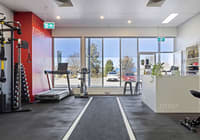
The Australian headquarters Atlassian outgrew is up for lease
The Corn Exchange Building, sitting at 173-185 Sussex Street in Sydney’s Western Corridor precinct, stands as a rare standalone character office headquarters and is now for lease. With approximately 1472 square metres of creative office floor space, this property has already proved the success of its setting, having previously played host to the biggest tech company in Australia, Atlassian.
“Standalone, character/heritage buildings in the CBD are very rare. Typically, these types of buildings are found in Chippendale and Surry Hills, so to have an asset of the same nature in the well-connected Western Corridor CBD location is rare. It is a statement for a business to occupy this building, especially with the success stories of Atlassian (tech unicorn) and Ethos Urban (who Colliers acquired) – both previous occupants of the Corn Exchange,” explains Jake Jamieson, manager of office leasing at Colliers.
At one time, the Australian tech giant planted its roots here, choosing the Corn Exchange for its distinctive character and central location. But Atlassian’s growth was rapid, and before long, the company outgrew its Sussex Street headquarters and moved on to larger premises on 341 George Street.
However, the building’s history stretches back much further than Atlassian’s success. Completed in 1887 by George McRae, who later designed the Queen Victoria Building on George Street, it originally formed part of Sydney’s thriving market network, serving as a trading hub for grain and produce and is the earliest remaining market building in the city.
Strategically located alongside Darling Harbour and just a short walk from Town Hall Station, the Corn Exchange is in the heart of Sydney’s hum. The Western Corridor has become a magnet for firms seeking visibility and influence.
The building’s design features loft-like interiors and heritage charm, and there are also large floor plans offering flexibility, whether it’s a thriving agency business or a co-working hub.
“Creative users likely would see value in this asset – groups in fashion, marketing or tech and architects; someone who wants to put their own stamp on the building and be known as occupying this historic asset,” he says.
Jamieson explains that the landlord has plans to renovate the building to appeal to an even wider network of tenants.
“We have had several inspections from large-scale fashion outfits, tech recruitment firms, and well-known architect and marketing agencies. The current fitout is a little tired, so the landlord is looking to invest in the asset to refurbish the space internally. We believe once the fitout presents a more modern light, the feedback from these tenants will be positive and we should secure an occupier shortly thereafter.”











